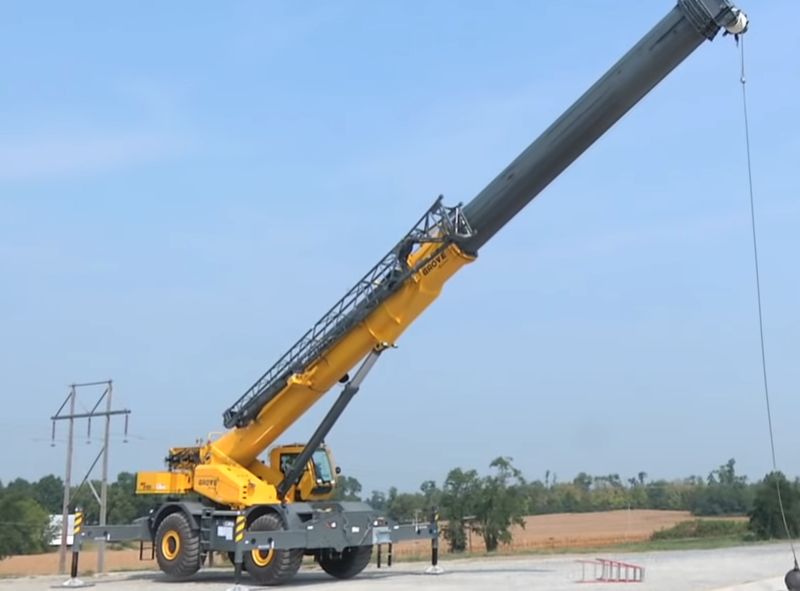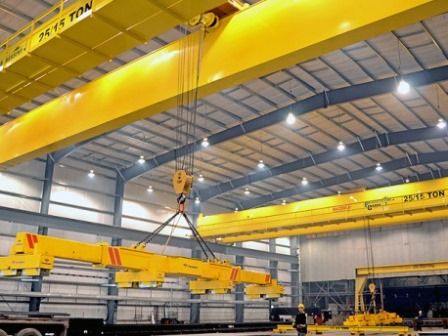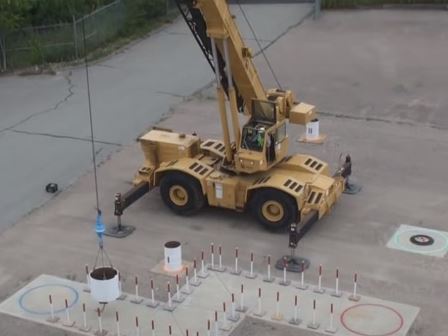A jib on a crane is an extension or projecting arm attached to the top of the crane’s main boom. It is also sometimes referred to as a “boom extension” or “luffing jib.” The jib enhances the crane’s reach and allows it to lift loads to greater heights and distances.
There are different types of jibs, and they serve various purposes based on the specific requirements of a lifting operation. Some common types of jibs include:
Fixed (or Fixed-angle) Jib: This type of jib is fixed at a specific angle and does not move during the lifting operation. It provides additional height and reach to the crane.
Luffing Jib: Unlike a fixed jib, a luffing jib can be raised or lowered, allowing for more flexibility in positioning the load. This is useful when lifting heavy loads to different heights.
Derrick Jib: A derrick jib is a heavy, inclined strut or beam that is connected to the top of the crane. It is often used for heavy lifting and is characterized by its fixed angle.
The jib plays a crucial role in the crane’s ability to perform a variety of lifting tasks, making it a versatile piece of equipment in construction, shipping, and other industries where heavy lifting is required.

What is a crane jib used for?
A crane jib serves several important purposes in lifting operations. Its primary function is to extend the reach and capabilities of a crane, allowing it to lift loads to greater heights and distances. Here are some key uses and benefits of a crane jib:
Increased Reach: The jib extends horizontally from the main crane boom, enabling the crane to reach over obstacles or into areas that may be challenging to access directly with the main boom alone. This is particularly useful in construction sites where the crane needs to navigate around buildings or other structures.
Flexibility in Load Placement: By providing an additional articulating arm, the crane jib allows for more precise and flexible placement of loads. This is especially important in construction and industrial settings where accuracy in positioning heavy objects is crucial.
Variable Lifting Heights: In the case of a luffing jib, the ability to raise or lower the jib provides the crane operator with the flexibility to lift loads to different heights. This is beneficial when working on multi-level construction projects or when dealing with structures of varying heights.
Heavy Load Handling: Some jibs, such as derrick jibs, are designed for handling exceptionally heavy loads. These types of jibs are characterized by their fixed angle and robust construction, making them suitable for lifting large and heavy objects.
Improved Maneuverability: The jib enhances the crane’s maneuverability by extending its reach and allowing for more precise control over load placement. This is especially important in confined spaces where the crane needs to navigate carefully.
Versatility: Different types of jibs cater to specific lifting requirements. For example, a fixed jib may be suitable for straightforward lifting tasks, while a luffing jib offers greater flexibility in adjusting the angle and height of the load.
A crane jib is a crucial component that extends the crane’s capabilities, providing versatility and flexibility in lifting operations across various industries.

Overhead Crane Test Questions and Answers
exam practice

Mobile crane test questions and answers
Practice questions representative of a mobile crane theoretical exam.
